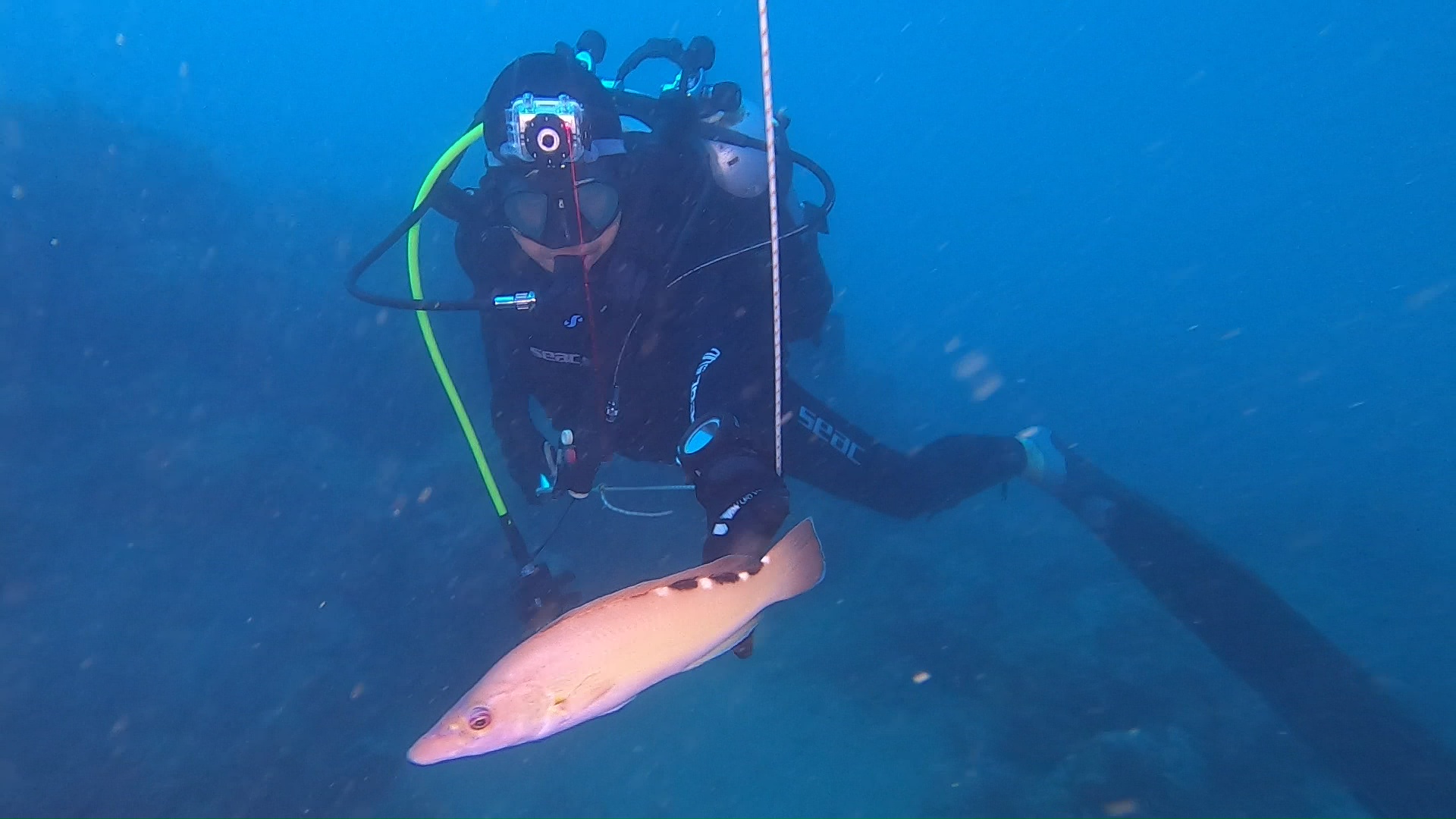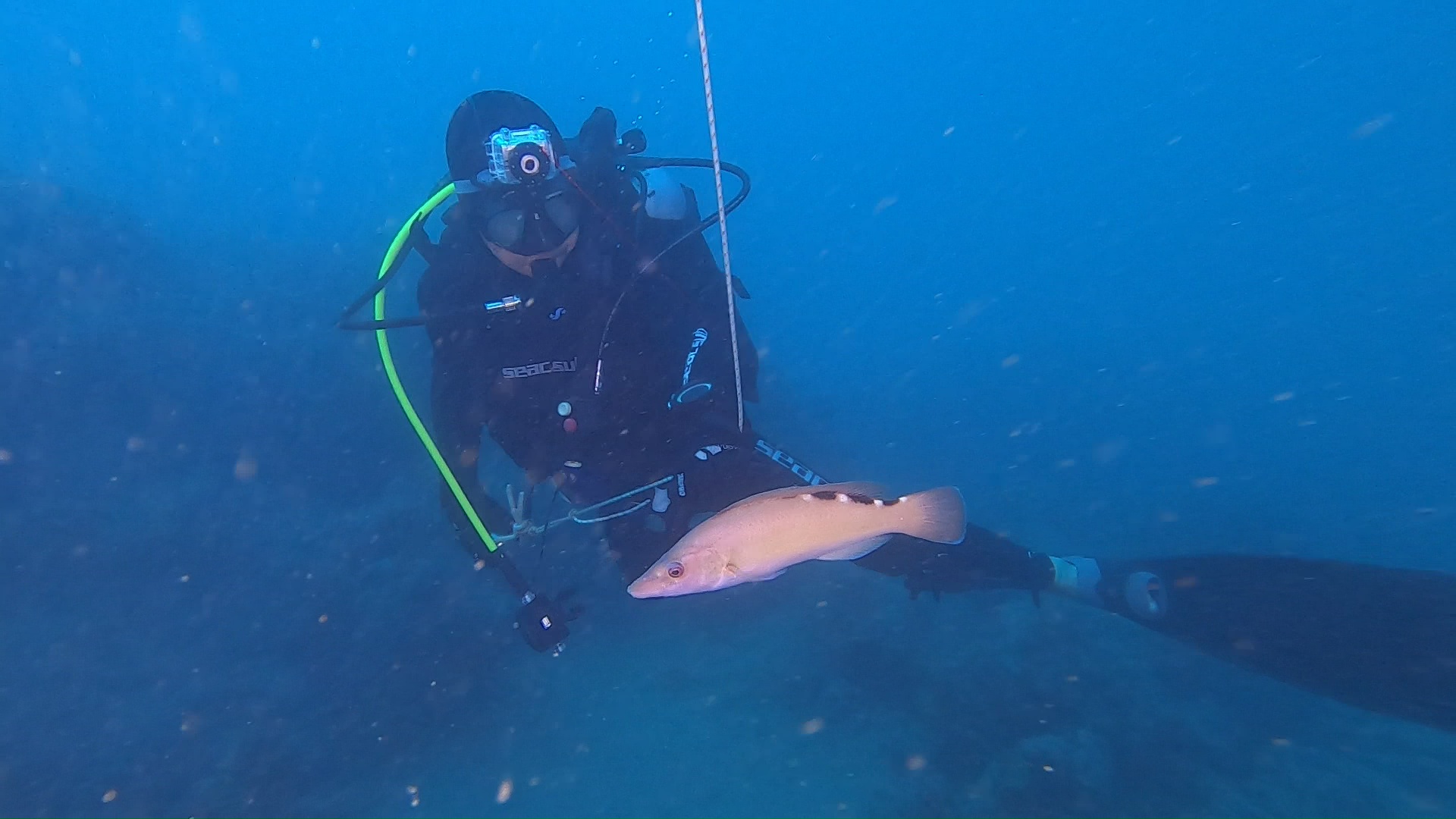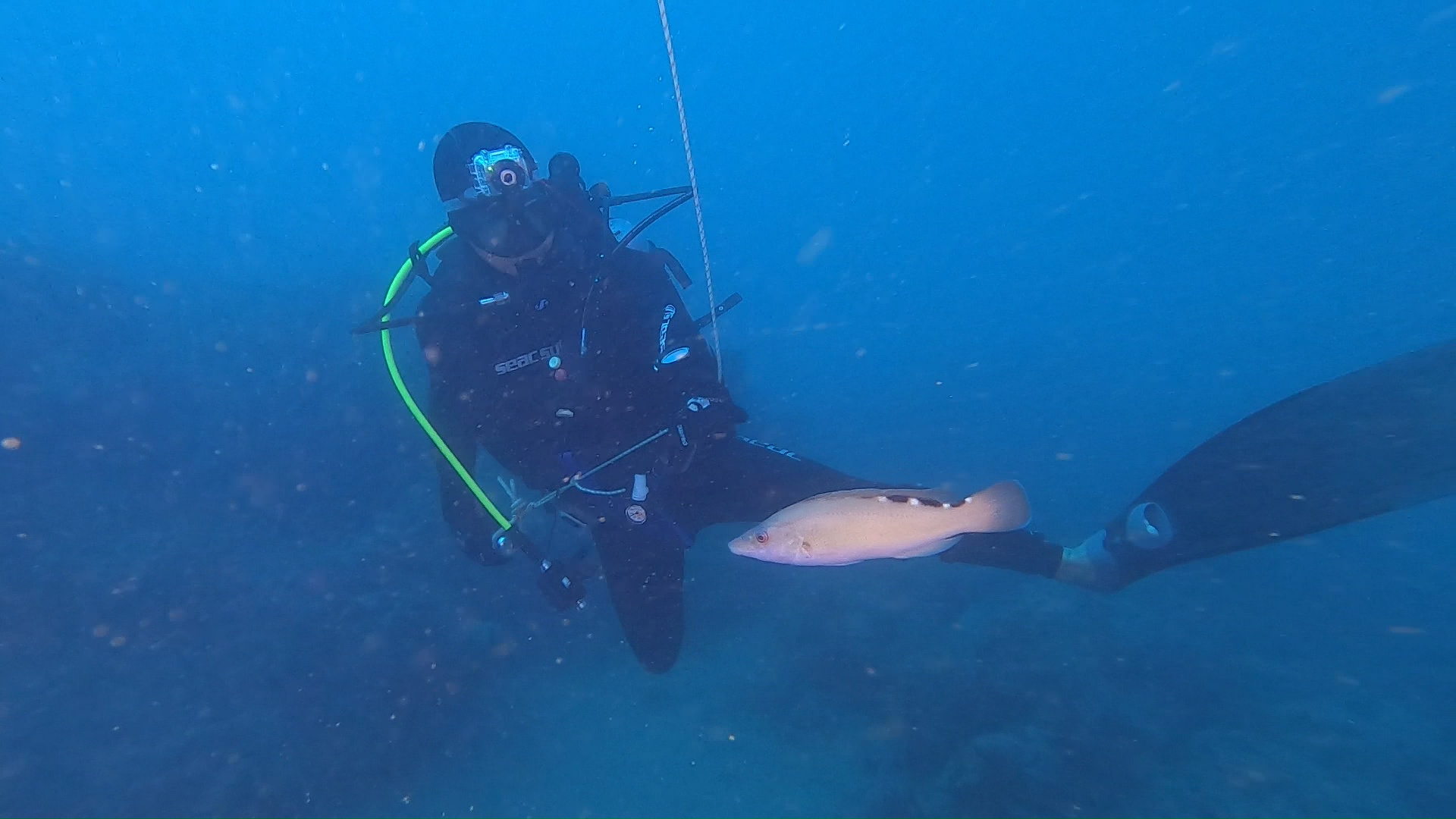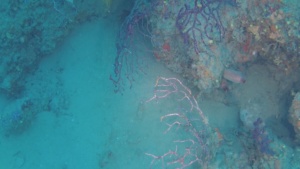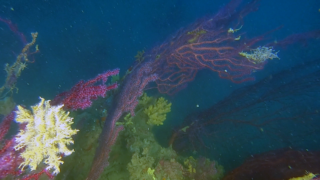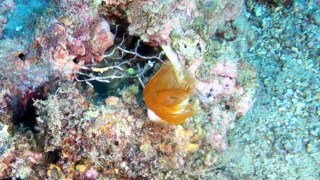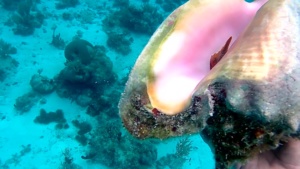In this article we want to dispel some myths for which some species of fish approach the diver to get acquainted or otherwise. In the video we actually see a Cuckoo wrasse female Whistle Thrush (Labrus mixtus) approaching the diver, or rather the two divers, until he is touched. This behavior is due to the fact that the fish is simply defending its territory, probably because we are in the presence of a nest with the eggs fertilized or to be fertilized. Pesci che difendono il loro territorio Labrus mixtus intotheblue.it
Also looking on the web for information on this species we find that it is a very suspicious species and difficult to approach underwater. This is probably true when these fish are not in the breeding phase, in spring and summer instead these wrasse are quite aggressive both with their fellow creatures and with strangers and as we see in the video they are not at all suspicious and cautious, especially when it comes to defending the territory and the nest where the eggs are laid.
The cuckoo wrasse (Labrus mixtus) is a species of wrasse native to the eastern Atlantic Ocean from Norway to Senegal, including the Azores and Madeira. It is also found in the Mediterranean Sea. They occur in weedy, rocky areas mostly between 40 and 80 m (130 and 260 ft).
Description The cuckoo wrasse has a long, pointed head, its body is slimmer and more elongated in shape than the ballan wrasse (Labrus bergylta), with which it is sympatric in the north eastern Atlantic. It is a very colourful fish which shows clear sexual dimorphism. The young males and the females are coloured with a mix of pink, orange and red. The females possess three black spots on their back to the rear of the dorsal fin, with white colouration between then which stretch to the tail which are not present on males. The males have blue heads and orange bodies, blue stripes and mottled patterns run along the body and there are blue lines on the margins of the fins.
Distribution The cuckoo wrasse occurs in the north east Atlantic Ocean along the coast of Europe from Norway south to Andalusia and along the Atlantic coast of north Africa south to Senegal. It occurs off the Canary Islands, the Azores and Madeira too. Its range extends into the Mediterranean Sea as far as Cyprus.
Habitat and biology The cuckoo wrasse Labrus mixtus is found where there are rocks and other hard substrates in the algal zone at depths of 2–200 metres (6 ft 7 in–656 ft 2 in), but are mainly found between 20–80 metres (66–262 ft). It is also associated with area dominated by coralline algae.
Reproduction It takes place in spring-summer, the eggs are laid in a nest, after furious fights between males. Like many labrids, it is a protogynous hermaphrodite. They are normally found occurring as solitary individuals or in pairs with young. They are oviparous and the female can lay up to a thousand eggs in a dish-shaped nest made by the male from algae, which he then guards. The cuckoo wrasse is a protogynous hermaphrodite, and females an change sex into males, a process which takes around seven months.
https://it.wikipedia.org/wiki/Labrus_mixtus
https://en.wikipedia.org/wiki/Cuckoo_wrasse
 English
English Italiano
Italiano
